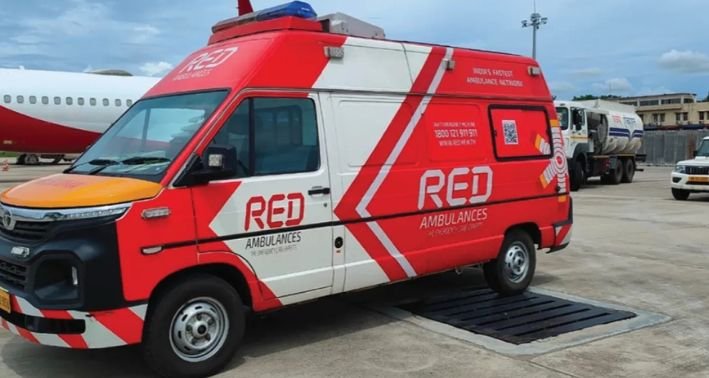In emergencies, every second counts. Whether it’s a critical accident on a highway, a cardiac emergency in a remote village, or a maternity case needing immediate transfer, the availability of a reliable ambulance service can be the difference between life and death. India, with its vast geography and varied infrastructure, presents unique challenges in emergency medical transport. This is where the role of the best ambulance service becomes crucial, especially those that operate as 24 hours ambulance services across the country.
In this article, we explore the critical features of India’s top ambulance providers, the importance of round-the-clock availability, and what makes a service truly dependable in India’s diverse medical landscape.
The Need for 24-Hour Ambulance Services in India
India’s growing population and increasing rate of medical emergencies demand a robust and responsive emergency medical service (EMS) system. Unfortunately, public health systems in many parts of the country still struggle with accessibility, especially during off-hours or in remote areas. This gap has led to the growing need for 24-hour ambulance services that ensure help is always within reach, regardless of the time or location.
Key scenarios where 24/7 ambulance services are essential include:
- Road traffic accidents during night hours
- Medical emergencies in rural or underdeveloped regions
- Inter-city or inter-state patient transport at odd hours
- Sudden health crises like strokes or cardiac arrests
Key Features of the Best Ambulance Services in India
The term best ambulance service goes beyond just fast vehicles. It encompasses a combination of quality care, rapid response, advanced equipment, and trained professionals. Here are the standout features that define top-tier ambulance services in India:
1. 24/7 Availability and Fast Response Times
Top ambulance providers operate around the clock with quick turnaround times, often reaching the patient in less than 15–20 minutes in urban areas. Real-time tracking and GPS-enabled dispatch systems help them locate and reach patients faster.
2. Range of Ambulance Types
A dependable provider offers various types of ambulances, including:
- Basic Life Support (BLS) units for non-critical transport
- Advanced Life Support (ALS) units for serious medical emergencies
- ICU-equipped ambulances for critical patient transfers
- Neonatal ambulances for infant care
- Air and train ambulances for long-distance or inaccessible locations
3. Trained Medical Personnel
The presence of paramedics, emergency medical technicians (EMTs), and even doctors in some ambulances ensures professional care en route to the hospital. The best services maintain rigorous training standards and ongoing certification for their staff.
4. State-of-the-Art Medical Equipment
Modern ambulances are mobile ICUs. Equipped with ventilators, defibrillators, oxygen supply, and advanced monitoring tools, they provide life-saving interventions while on the move.
5. Nationwide Coverage
The best ambulance services in India operate across multiple cities and states, ensuring seamless inter-state patient transport. Some services have partnerships with multiple hospitals, clinics, and even telemedicine platforms.
Major Players in India’s Ambulance Services Sector
India has seen a surge in both government-led and private ambulance services. Notable mentions include:
- RED.health – Known for their tech-driven approach and wide network across India.
- Ziqitza HealthCare – Operates 108 ambulance services in collaboration with state governments.
- StanPlus – Offers on-demand medical transportation, including ICU and inter-city ambulances.
- GVK EMRI (Emergency Management and Research Institute) – Operates 108 and 102 emergency services in several states under PPP models.
These providers are instrumental in reshaping India’s emergency medical landscape by offering 24 hours ambulance services that match international standards.
Digital Integration and Booking Simplicity
With increasing smartphone penetration and internet access, booking an ambulance has become simpler. Many of the best ambulance services now offer:
- Mobile apps for instant bookings
- Live ambulance tracking
- Integration with hospital networks
- Cashless payments through insurance tie-ups
- 24/7 customer support for any query or assistance
Such digital interfaces not only improve response time but also reduce patient stress during critical situations.
Challenges and the Road Ahead
Despite the progress, the ambulance ecosystem in India still faces significant challenges:
- Uneven distribution of services in rural vs. urban areas
- Lack of standardization in private ambulance providers
- Inadequate infrastructure and delayed road access
- Limited public awareness of how to access emergency services
Addressing these issues requires a collaborative approach involving the government, private players, and the community. Enhancing training, subsidizing emergency services in rural areas, and investing in road infrastructure are critical steps.
Conclusion
The need for reliable, accessible, and responsive ambulance services has never been more pressing in India. The best ambulance services are those that combine speed, medical expertise, and round-the-clock availability. A 24-hour ambulance service is not just a convenience—it’s a lifeline that supports India’s healthcare system in moments of acute need.
As technology continues to integrate with healthcare and emergency services, India is moving closer to building an EMS infrastructure that truly leaves no one behind. Whether in cities or remote villages, the promise of an ambulance arriving in minutes is becoming more of a reality—thanks to the pioneers redefining ambulance service in India.
